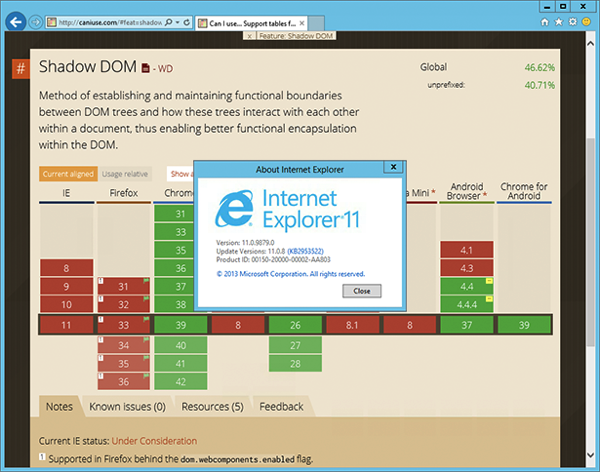Bucardo replication trigger enabling
Bucardo is one of the trigger-based replication systems for Postgres (others include Slony and Londiste). All of these not only use triggers to gather information on what has changed, but they also disable triggers when copying things to remote databases. They do this to ensure that only the data itself gets copied, in as fast as manner as possible. This also has the effect of disabling foreign keys, which Postgres implements by use of triggers on the underlying tables. There are times, however, when you need a trigger on a target to fire (such as data masking). Here are four approaches to working around the disabling of triggers. The first two solutions will work with any replication system, but the third and fourth are specific to Bucardo.
First, let’s understand how the triggers get disabled. A long time ago (Postgres 8.2 and older), triggers had to be disabled by direct changes to the system catalogs. Luckily, those days are over, and now this is done by issuing this command before copying any data:
SET session_replication_role = 'replica';This prevents all normal triggers and rules from being activated. There are times, however, when you …
bucardo postgres replication
2014 hack.summit() wrap-up #hacksummit
Seeing the proposed line-up for the 2014 hack.summit() virtual conference was the grown-up equivalent of seeing the line-up for some of the first Lollapalooza events. It was definitely an “All those people I want to see, and all in one place? head asplode” moments.
So, what is this conference with the incredibly nerdy name? In short, it’s a selection of industry leading speakers presenting all on-line and streamed live. The “registration fee” was actually a choice between mentioning the conference on a few social media platforms, or making a donation to one of a number of programming non-profits. Seeing as I don’t tweet, I made a donation, then signed in (using OAuth) via my Google+ account. It was a delightfully frictionless process.
The hack.summit() conference ran December 1st through December 4th, but I was only able to “attend” the last two days. Luckily for me, all of the live-streamed presentations are also available afterwards on the hacksummit site. They feel a little hidden away in the small menu in the upper left corner, but they’re all there, available as YouTube videos.
So, why is was hack.summit() worth your time? It’s got an amazing collection of very accomplished …
conference
Ecommerce in the Django World
Mezzanine (http://mezzanine.jupo.org/) is a powerful piece of software written for the Django Framework in Python that functions like a structured content management system similar to Drupal, WordPress, and others. Built on top of this CMS structure is a module which adds features for Ecommerce which is known as Cartridge (http://cartridge.jupo.org/).
Installing Cartridge/Mezzanine
Installing the Mezzanine CMS system from scratch can be accomplished in two methods, either by using the pip python package manager, or you can clone the current source from the git repository from the software maintainers. If you were planning to modify either Mezzanine or Cartridge to customize the setup for your own needs the latter would likely be preferable as you could then easily begin creating custom branches off the original source to track the customization work. However for this example I will show the pip method of installation:
pip install -U cartridgeOnce installed, there is a mezzanine-project command which will allow you to create a new blank Mezzanine environment within a new directory, and in this case we will also send an option to instruct the command to install the Cartridge module …
django ecommerce python cms
Easier IE Site Testing With RemoteIE
Microsoft recently announced a new service which I’m finding very useful. RemoteIE lets you test your sites with IE (currently version 11) on Windows 10 Technical Preview. The service runs in Azure RemoteApp which is available for several clients including Android, iOS and Windows Phone. What’s great about this is that you do not have to install and maintain your own virtual machine with VirtualBox or VMWare.
To use RemoteIE you’ll need a valid Microsoft account—it’s easy to sign up if you don’t already one. Once you have an account and have downloaded & installed the Azure RemoteApp client of your choice it’s just a matter of starting it up and logging in. Happy Testing!
html browsers testing tools virtualization windows
MySQL to PostgreSQL Migration Tips
I recently was involved in a project to migrate a client’s existing application from MySQL to PostgreSQL, and I wanted to record some of my experiences in doing so in the hopes they would be useful for others.
Note that these issues should not be considered exhaustive, but were taken from my notes of issues encountered and/or things that we had to take into consideration in this migration process.
Convert the schema
The first step is to convert the equivalent schema in your PostgreSQL system, generated from the original MySQL.
We used mysqldump --compatible=postgresql --no-data to get a dump which matched PostgreSQL’s quoting rules. This file still required some manual editing to cleanup some of the issues, such as removing MySQL’s “Engine” specification after a CREATE TABLE statement, but this resulted in a script in which we were able to create a skeleton PostgreSQL database with the correct database objects, names, types, etc.
Some of the considerations here include the database collations/charset. MySQL supports multiple collations/charset per database; in this case we ended up storing everything in UTF-8, which matched the encoding of the PostgreSQL database, so there were no …
shell mysql perl postgres
Integrate Twilio in Django
Twilio
Twilio is a powerful HTTP API that allows you to build powerful voice and SMS apps. The goal of this blog post is to help make building the SMS applications as simple as possible in django.
There is a already Twilio Python help library available. The open source twilio-python library lets us to write Python code to make HTTP requests to the Twilio API.
Installation
The easiest way to install twilio-python library is using pip. Pip is a package manager for Python.
Simply run following command in terminal.
$ pip install twilioTwilio API Credentails
To Integrate twilio API in django application, we need TWILIO_ACCOUNT_SID and TWILIO_AUTH_TOKEN variables. These variables can be found by logging into your Twilio account dashboard. These variables are used to communicate with the Twilio API.
You’ll need to add them to your settings.py file:
TWILIO_ACCOUNT_SID = 'ACXXXXXXXXXXXXXXXXXXXXXXXXXXXXXXXX'
TWILIO_AUTH_TOKEN = 'YYYYYYYYYYYYYYYYYYYYYYYYYYYYYYYY'Create a New App
We are going to interact with people using SMS, so I prefer to create an app named communication. I am assuming you’ve already installed Django.
Run following command in terminal.
$ django-admin.py …django python saas api
When Postgres will not start
One of the more frightening things you can run across as a DBA (whether using Postgres or a lesser system) is a crash followed by a complete failure of the database to start back up. Here’s a quick rundown of the steps one could take when this occurs.
The first step is to look at why it is not starting up by examining the logs. Check your normal Postgres logs, but also check the filename passed to the –log argument for pg_ctl, as Postgres may not have even gotten far enough to start normal logging. Most of the time these errors are not serious, are fairly self-explanatory, and can be cured easily—such as running out of disk space. When in doubt, search the web or ask in the #postgresql IRC channel and you will most likely find a solution.
Sometimes the error is more serious, or the solution is not so obvious. Consider this problem someone had in the #postgresql channel a while back:
LOG: database system was interrupted while in recovery at 2014-11-03 12:43:09 PST
HINT: This probably means that some data is corrupted and you will have to use the last backup for recovery.
LOG: database system was not properly shut down; automatic recovery in progress
LOG: …postgres
MongoDB and OpenStack — OSI Days 2014, India
The 11th edition of Open Source India, 2014 was held at Bengaluru, India. The two day conference was filled with three parallel tech talks and workshops which was spread across various Open Source technologies.

In-depth look at Architecting and Building solutions using MongoDB
Aveekshith Bushan & Ranga Sarvabhouman from MongoDB started off the session with a comparison of the hardware cost involved with storage systems in earlier and recent days. In earlier days, the cost of storage hardware was very expensive, so the approach was to filter the data to reduce the size before storing into the database. So we were able to generate results from filtered data and we didn’t have option to process the source data. After the storage became cheap, we can now store the raw data and then we do all our filter/processing and then distribute it.
Earlier,
Filter -> Store -> Distribute
Present,
Store -> Filter -> Distribute
Here we are storing huge amount of data, so we need a processing system to handle and analyse the data in efficient manner. In current world, the data is growing like anything and 3Vs are phenomenal of growing (Big)Data. We need to handle the …
big-data cloud conference mongodb open-source









